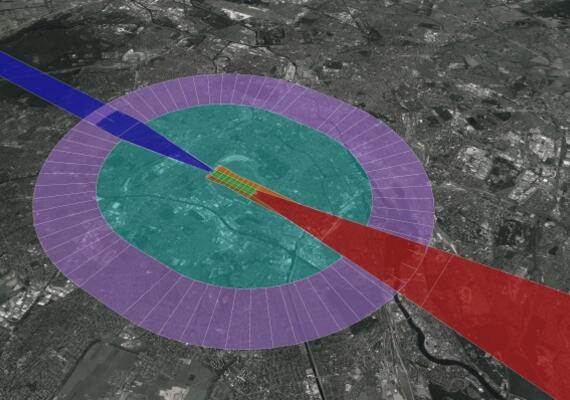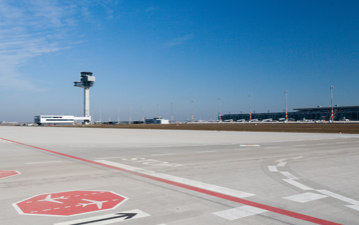Solar Farms at Airports - A key to the Transition to Renewable Energy at Aerodromes
In view of recent developments on the global energy markets, rising electricity and energy prices on the one hand, and efforts to reduce the airport carbon footprint on the other, many airport operators are seeking for a safe and independent energy supply powered by renewable energies. Airports often have large areas of undeveloped land or flat building roofs that could, in principle, be used for solar energy. While waiting for further sustainable operational improvements, as well as worldwide introduction of sustainable aviation fuels (SAF) or alternative propulsion technologies for aircrafts, solar energy, in contrast, represents a ready-to-use technology with a positive impact on the airport carbon footprint.
The solar power yield at airports can be massively increased if unconstructed spaces near aircraft movement areas are used. However, placing a solar farm (e.g., with PV arrays) near aircraft movement areas is challenging from a safety and compliance perspective. Airport operators might ask questions such as:
- What about glint & glare from solar panels for pilots and ATC?
- Do the PV arrays pose an obstacle to aviation and is there a possibility of interference with CNS equipment?
- Are the necessary safety distances ensured on the ground? (e.g. to runway or taxiway strips)
airsight performs feasibility studies for solar power plants near aircraft movement areas. Doing so, we support airports to reduce their carbon footprint, improve sustainability of the airport’s operation and being independent from fossil-based energy sources. Our aim is to maximize the output of the proposed solar power system at the airport, while maintaining high safety levels at airports. For hazards posed by solar arrays near aircraft movement areas, a multi-level risk assessment is mandatory to ensure that only acceptable risks exist for airport operations.
Our services and deliverables at a glance:
- Hazard analysis and risk assessment of glint and glare from solar farms
- Photovoltaic (PV)-panels (ground/roof installation, based on azimuth/tilt angles of PV-panels, panel material, fixed vs. single/dual tracking)
- Concentrated solar power (CSP), if located in the (greater) vicinity of an airport
- Optimization of PV siting and configuration close or within an airport: Identification of the optimum PV panel configuration with minimum glare while maximizing system output
- Development of mitigation measures to limit glint & glare effects
- e.g. single/dual tracking, anti-reflection coating (ARC)
- Obstacle assessment
- CNS assessment
- Impact Assessments of PVS on operational services, i.e. Rescue and Firefighting Services (RFFS)
- Plume vertical velocity assessment (only CSP related)
- Compliance checks (acc. EASA CS-ADR-DSN/CS-HPT-DSN) for siting of PV panels near aircraft movement areas
- Grid connection planning PV-panel -> substation (if within airport boundaries)
- Estimate solar panel output based on feasibility study
- Provide input for CO2 mapping (ISO14001, Airport Carbon Accreditation)
- Environmental Impact Assessment (EIA) on biodiversity
- Impact assessment on Wildlife Strike Hazard Management
Our skills and experiences:
For the evaluation and risk assessment of solar power plants at airports, we draw on our broad expertise in the field of hazard analysis and risk assessment with a cross-disciplinary team of experts in sustainable aviation, airport planning and compliance, experts for aerodrome safety and assessments of solar glint & glare, obstacles, and CNS-equipment.
In the past, airsight has conducted several feasibility and case studies for solar power plants (PV plants and Concentrated Solar Power, CSP), e.g. in Malta and Dubai. Furthermore, with more than 100 assessments and aeronautical studies on obstacles and CNS-equipment since 1999, we are internationally one of the most renowned experts in this field. Due to extensive knowledge and experience in national and international specifications for the design and management of aerodromes, airsight is uniquely capable to guide airport operators efficiently through the process of gaining authority approval for solar power plants at airports.
Why wait?
Would you like to learn more about our services around renewable energy sources at airports? Are you ready to take further action to increase the share of renewable energy sources, but you are still unsure about the safety impacts on the airport’s operations? We are looking forward to receiving your e-Mail on solar power related projects and ideas you would like to discuss with us!
Key Facts




